Latest
Latest information from the Institute for Policy Solutions at the Johns Hopkins School of Nursing.
Latest | Home | About | Our People | CLAFH | Events | News | Stories | IPS Affiliates | Training
IPS Names Second cohort of fellows for n-siss program
Second group of N-SISS Fellows comprises nurse scientists from across the U.S. for one-of-a-kind training program building national capacity to eliminate health inequities and fix broken U.S. health system.

JAMA Health Forum: Federal Cuts, Shutdown Threaten advances in Integrated Clinical-Social Care
Paper offers a way forward with policy and programmatic prescription.
A new paper in JAMA Health Forum highlights the danger of federal cuts to health care reforms that address patients’ health-related social needs through integrated clinical-social care. In “Integrated Clinical–Social Care and Boundaries of Health Care” (Vincent Guilamo-Ramos; Marco Thimm-Kaiser; Adam Benzekri; Kody H. Kinsley), the authors also bring clarity to the debate about effective integrated clinical-social care with three spheres for policy and programmatic innovation: .
“Medicaid cuts curb the progress made through integrated clinical and social care. A lack of shared vision of the value and role of integrated clinical-social care within healthcare reforms is also holding progress back. Our new paper advances this debate by delineating, and effectively leveraging the roles and functions of the health care system, social welfare system, and bridging infrastructure between them—to facilitate an integrated clinical-social care paradigm that improves health outcomes and reduces costs,” said lead author Vincent Guilamo-Ramos, PhD, RN, FAAN, Institute for Policy Solutions (IPS) Executive Director and Leona B. Carpenter Chair in Health Equity and Social Determinants of Health at Johns Hopkins School of Nursing.

Rural Health Transformation Program: State Strategies for Lasting Impact
In this new State Health & Value Strategies article, Institute for Policy Solutions Senior Policy Adviser and former North Carolina Health & Human Services Secretary Kody Kinsley, MPP, outlines the necessary strategies state policymakers should adopt now in designing plans to transform rural health for people in their state.
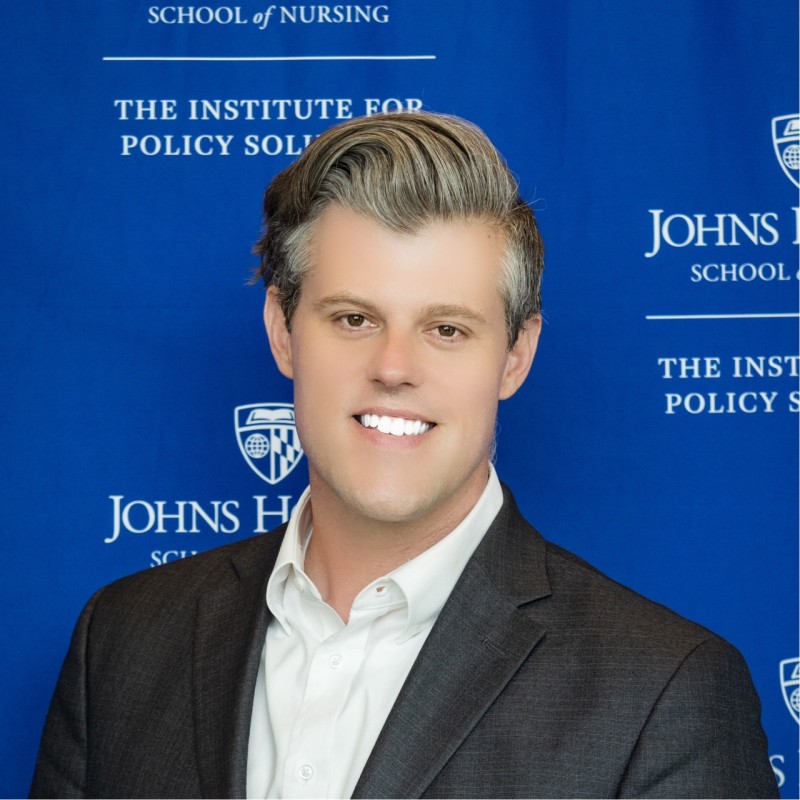
NEW NATURE MEDICINE PAPER
Winners and Losers: Zero-Sum Thinking, Major Roadblock to Achieving Optimal US Population Health
Details how health inequities harm everyone, counters 4 fallacies of zero-sum health thinking, urges new collective action to advance healthcare reforms.
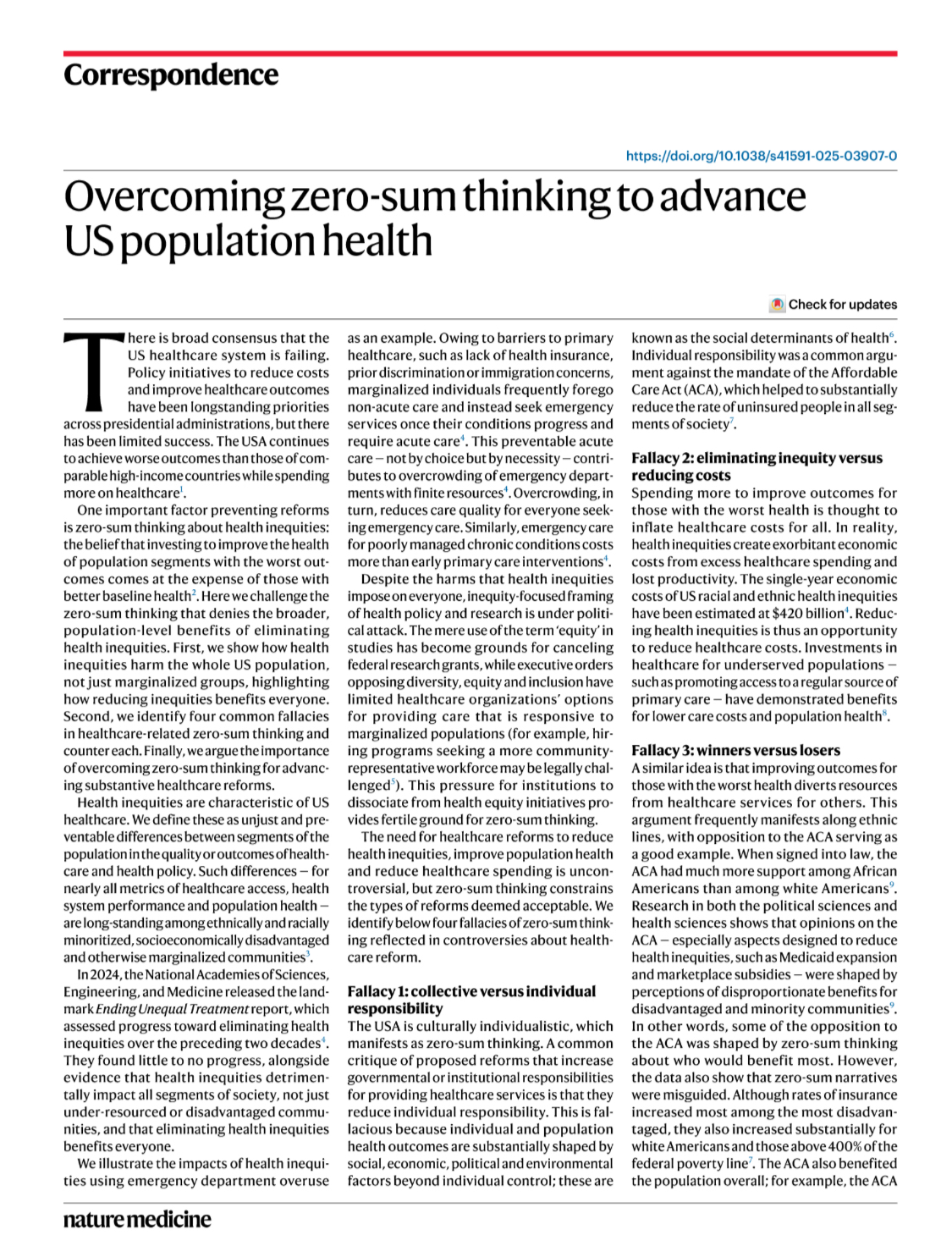
Timely Medicaid Discussion Showcased Value of Integrated Social and Clinical Care
Highlights opportunities to realign our health care system, improve outcomes and reduce costs.
Top health policy experts, with a range of perspectives on how Medicaid and related payor programs can more effectively address both clinical and social drivers of health, headlined a special convening recently. Organized by the Institute for Policy Solutions (IPS) at Johns Hopkins School of Nursing, “The Boundaries of Health: Debating the ROI of Programs and Policies that Integrate Social and Clinical Care,” is timely as the administration and members of Congress debate funding cuts that could undermine efforts to address the harmful social determinants of health that drive costly health inequities.
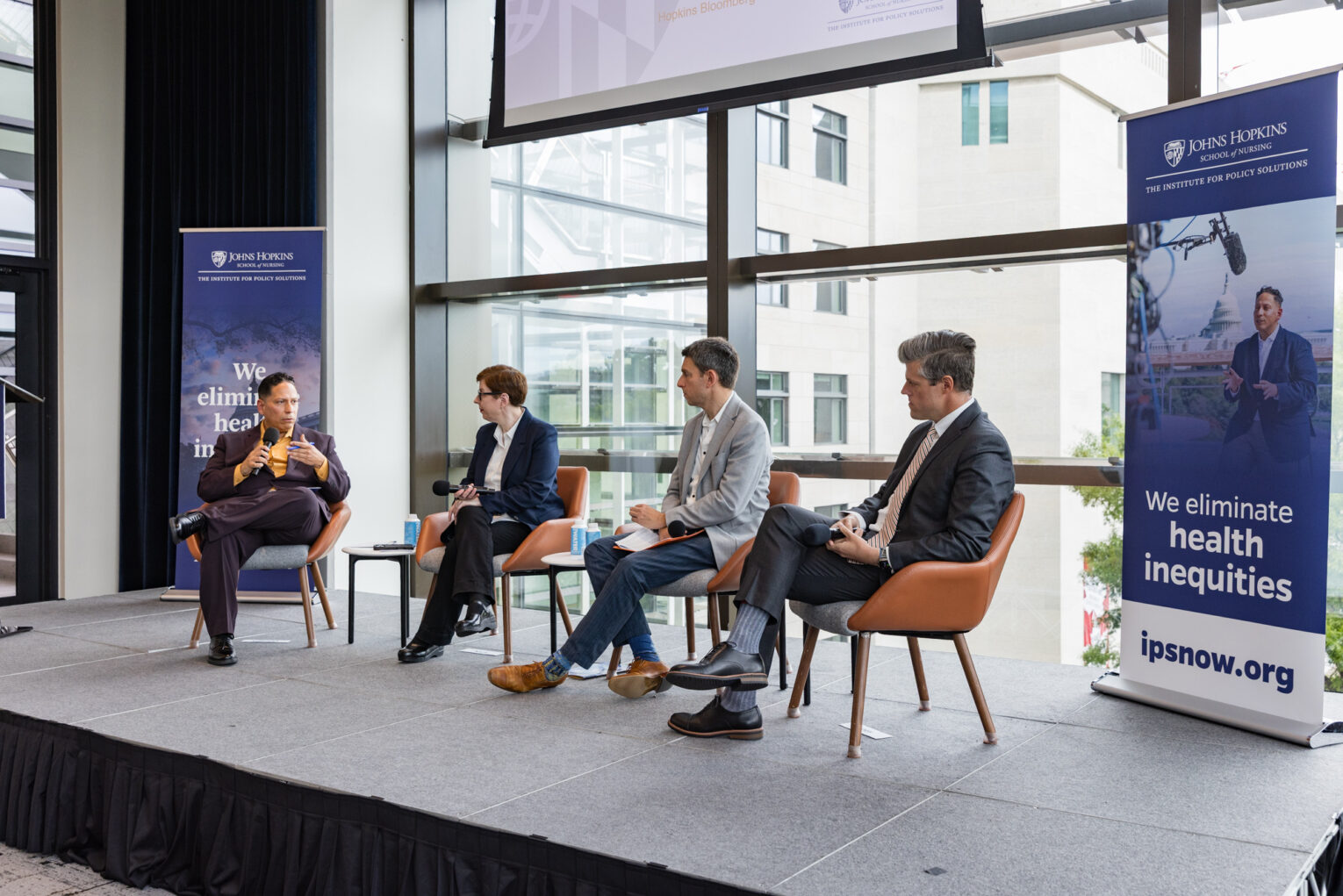
New in The Lancet — Actions and policies that make U.S. health workforce less representative will harm health and hike costs, warns Institute for Policy Solutions.
In the latest edition of The Lancet, the authors of Population health and a representative U.S. health care workforce reveal a hidden impact of recent controversial actions and policies aimed at rolling back diversity and inclusion: they’re bad for everyone’s health — literally. The authors also underscore an opportunity: investing in a representative healthcare workforce is an essential strategy for fixing our broken health system. We sat down with lead author and executive director of the Institute for Policy Solutions at the Johns Hopkins School of Nursing, Dr. Vincent Guilamo-Ramos, to learn more.

Health Policy Expert and Former State Health Secretary Joins IPS as Senior Policy Advisor
Kody H. Kinsley, MPP, one of the nation’s leading health policy experts, has joined the Institute for Policy Solutions (IPS) at Johns Hopkins School of Nursing as Senior Policy Advisor.
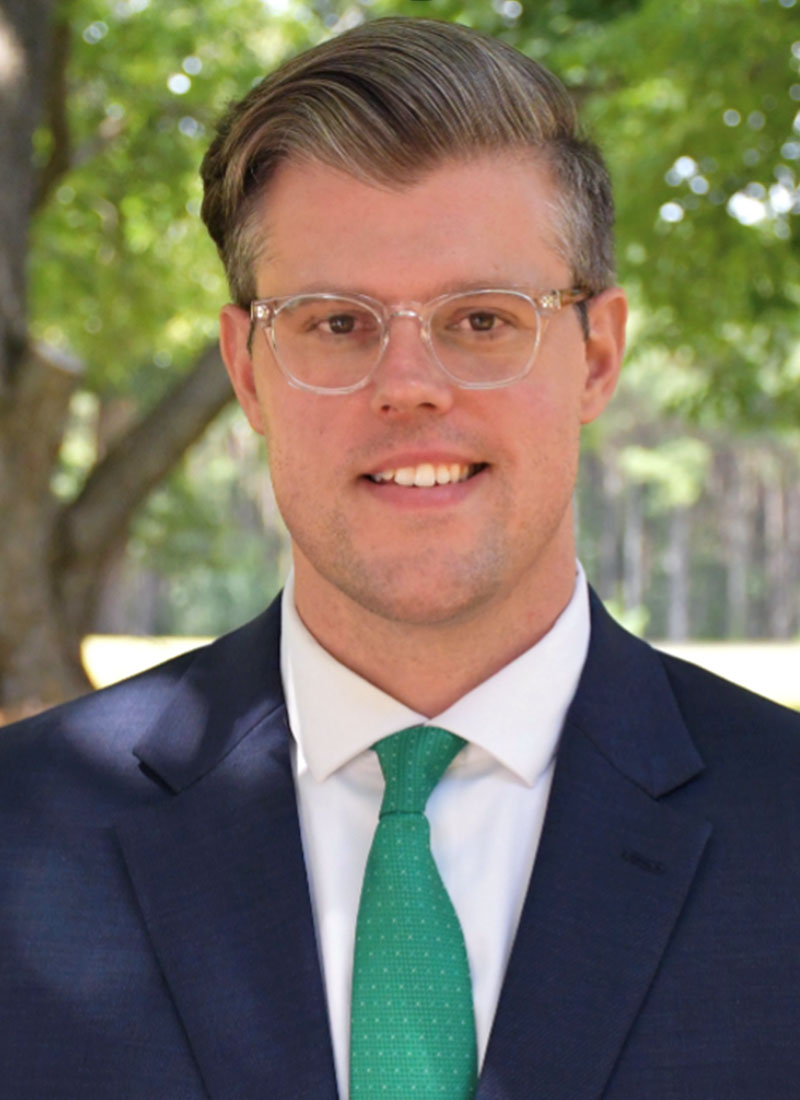
IPS ED DELIVERS COMMENCEMENT ADDRESS AT UCSF SON
Professor Vincent Guilamo-Ramos, PhD, RN, FAAN, executive director of the Institute for Policy Solutions (IPS) at Johns Hopkins School of Nursing, provided the keynote commencement address at the University of California, San Francisco, School of Nursing (UCSF-SON) graduation ceremony recently.

Declining US Drug Overdose Deaths: Evidence-Based Prevention and Treatment Working
Return to failed “War on Drugs” tactics will reverse progress
A new editorial in the BMJ suggests that a 22% decrease in overall U.S. drug overdose deaths over 2023/2024 signals that investments in overdose prevention and substance use disorder treatment are working. In Avoiding a new US “war on drugs”: Declining US drug overdose deaths show that evidence-based public health approaches work (Vincent Guilamo-Ramos, Adam Benzekri, Loftin Wilson, and Marissa D. Abram), the authors call for more investment in treatment and prevention to accelerate progress — and to reject calls for a return to “War on Drugs” tactics that bipartisan experts believe didn’t work.

First Ten Fellows Named for Innovative Social Determinants of Health (SDOH) Program
Eliminating health and health care inequities is the most promising solution to fix our broken health system. Now ten widely-respected nurse scientists — the first Fellows of the Nursing Science Incubator for Social Determinants of Health Solutions (N-SISS) — are about begin their cutting-edge research to make breakthroughs and advance optimal health for everyone.

IPS ED Appointed to the National Advisory Council on Nurse Education and Practice
Professor Vincent Guilamo-Ramos has been appointed to the National Advisory Council on Nurse Education and Practice (NACNEP) by U.S. Secretary of Health and Human Services Xavier Becerra. Guilamo-Ramos is executive director of the Institute for Policy Solutions, Leona B Carpenter Chair in Health Equity and Social Determinants of Health, and director of the Center for Latino Adolescent and Family Health at John’s Hopkins School of Nursing

2024 WORLD AIDS DAY
Collective Action Needed to End HIV/AIDS
Common Ground for Divided Nation
This World AIDS Day Sunday, December 1, the Center for Latino Adolescent and Family Health (CLAFH) along with the Institute for Policy Solutions (IPS) at Johns Hopkins School of Nursing is calling all sectors to act.

New Approach NEEDED NOW TO END HIV/AIDS CRISIS AMONG LATINOS
The fight to make an invisible crisis more visible continues today with an important new paper published in the New England Journal of Medicine.
In “The U.S. Latino HIV Crisis — Ending an Era of Invisibility” experts are urging all sectors of the health and public health community to urgently evolve their approaches to meet the largely invisible ongoing HIV/AIDS crisis among Latinos. This call-to-action comes at a time when the decades-long effort to end the epidemic in the U.S. is showing overall progress—but, not for Latinos.
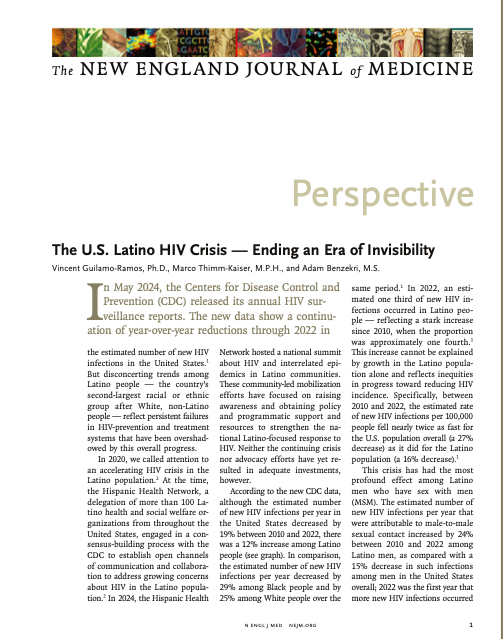
SCOTUS decision “bad for America’s health” says new article
In a first, a new article “Overcoming the Impact of Students for Fair Admission v Harvard to Build a More Representative Health Care Workforce: Perspectives from Ending Unequal Treatment” (Millbank Quarterly) shows how a less representative health care workforce — an impact of the Supreme Court of the United States’s decision that banned race‐conscious college admissions — is bad for America’s health.
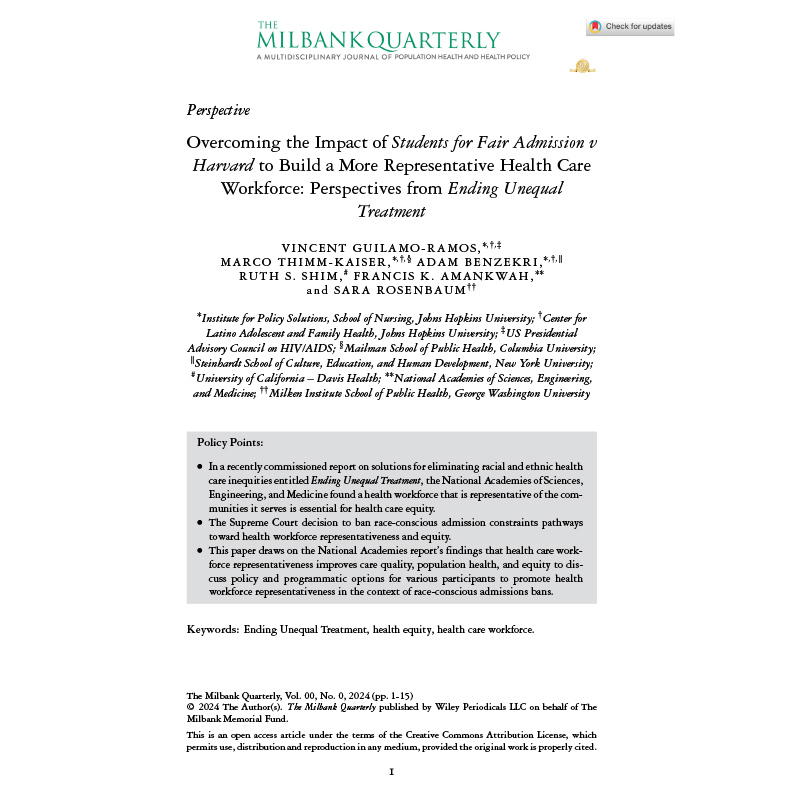
“We Can Reverse Latino HIV Crisis,” Guilamo-Ramos
WASHINGTON, D.C. — Prof. Vincent Guilamo-Ramos, PhD RN Executive Director of the Institute for Policy Solutions (IPS) at Johns Hopkins School of Nursing, joined a diverse group of leaders at the White House today to shine the spotlight on the largely invisible HIV crisis in the Latino community.

Prof. Vincent Guilamo-Ramos, PhD RN Executive Director of the Institute for Policy Solutions (IPS) at Johns Hopkins School of Nursing.
